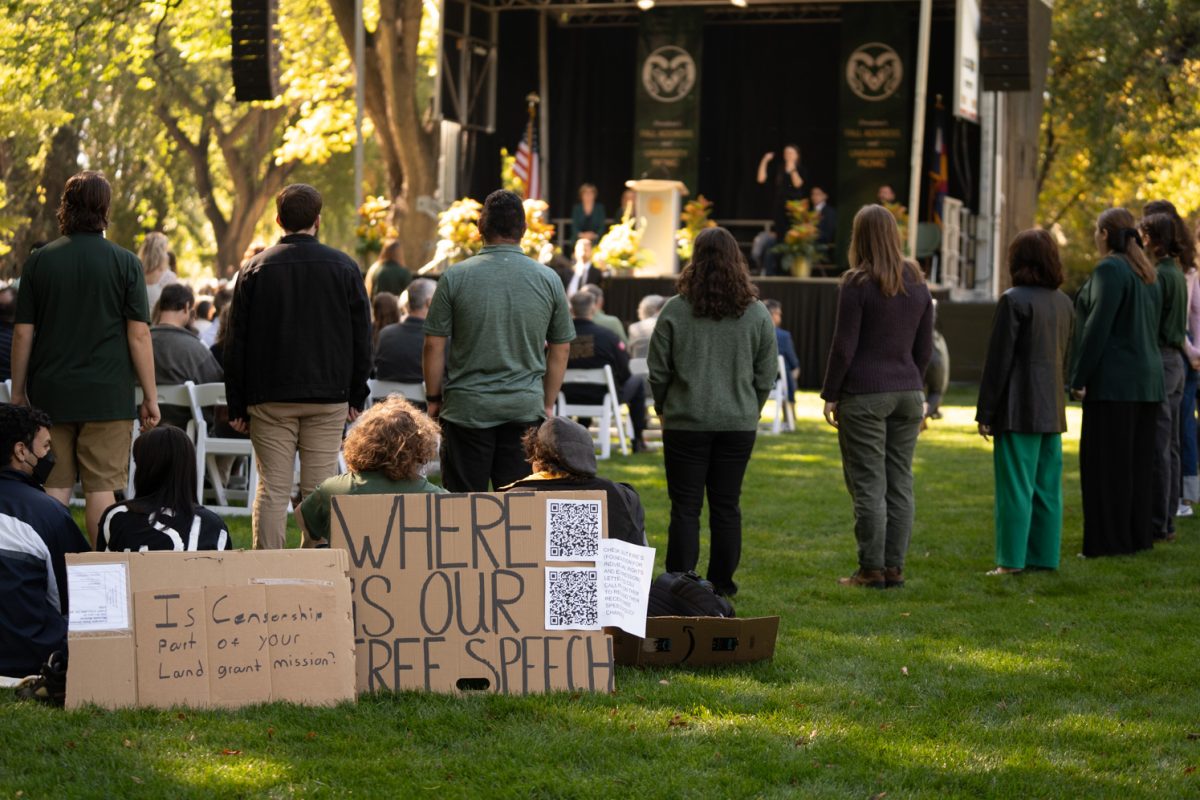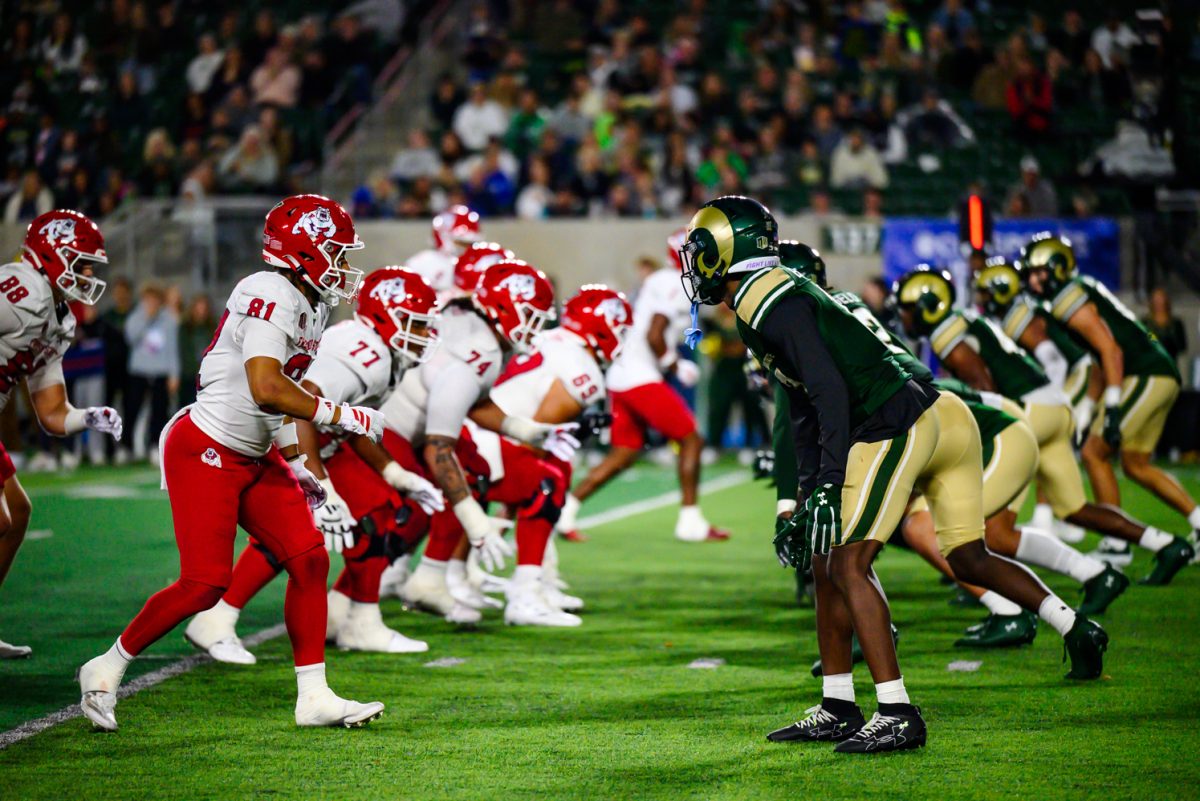The director of athletics is responsible for every financial decision made by Colorado State Athletics.
After more than eight years serving as the director of athletics for CSU, Joe Parker abruptly stepped back and moved into an advisory role in February.
He later took a job at the University of Iowa as the deputy director of athletics in May.
At the time of print, CSU Athletics could not provide a statement on the reasoning behind Parker’s departure.
While it was initially reported that Parker stepped aside into an advisory role, sources told The Collegian that the reason for his abrupt departure as CSU’s AD was that the new CSU soccer and softball fields went over budget.
That, however, was not Parker’s only fault. While he found success in some areas of athletics, he failed to achieve what matters most financially in college athletic programs: filling the football stadium.
CSU football went just 40-63 under three different head coaches during Parker’s tenure. Mike Bobo went 28-35 over his five years at the helm, and Parker followed that up by hiring the now widely hated Steve Addazio.
Addazio went just 4-12, irking players, fans and media alike along the way. Parker’s decision to bring Addazio on brought a lot of controversy to an already struggling CSU football program. In a 2020 article, Miles Blumhardt of the Coloradoan reported that 20 former and current CSU football players came forward saying they “witnessed recurring instances of racial insensitivity and abusive behavior within the department.” Those athletes also called for Parker to be fired.
In just a two-year period, Parker’s first two football hires cost the program nearly $5 million in buy-out fees. Those buy-outs contributed to Athletics’ increasing deficit in self-supporting revenue compared to expenses.
CSU Athletics generally runs on a break-even budget between its self-supporting revenue and the funds provided to Athletics by the university. The fees provided by CSU are counted as nonself-supporting revenue and come from student fees and direct and indirect institutional support.
When only self-supporting revenue is accounted for, CSU Athletics runs into a big deficit. In 2021, Athletics saw a nearly $24 million deficit; in 2022, it was just more than $28 million; and in 2023, it rose to $29.5 million.
When the new soccer and softball fields were initially approved in 2019, the expected cost of construction was between $6.3 million and $6.5 million, according to a CSU SOURCE article.
The article also mentioned that the $5.07 student fee allocated toward the Athletics debt service would be extended from a prior Moby Arena construction project.
In 2022, CSU Athletics announced that a $5 million donation was made by the Bohemian Foundation, helping pay for the new fields and, in turn, increasing the budget to range from $8 million to $10 million. The Collegian confirmed that the final cost of the project was $10.6 million — $600,000 over the maximum budget.
This, in turn, prompted CSU Athletics to turn back to the Student Fee Review Board, asking for a 98.6% increase in the Athletics debt-service fee to help pay for the excess costs, which Athletics attributes to the COVID-19 pandemic and inflation.
In a statement, a CSU Athletics spokesperson said that in spring 2024, the SFRB agreed to continue their support for women’s athletics and their facilities. This led to an increase of $5 in the fee going toward the debt service. Athletics thanked the SFRB, saying they are looking forward to seeing generations of women athletes represent CSU as they compete in the new complex.
“We are very thankful for the SFRB’s support and look forward to seeing generations of women Athletes represent CSU as they compete in the new complex,” the spokesperson said.
The initial proposal, overseen by Parker, provided insight into the entire Athletics budget but didn’t give the SFRB what it needed to pass the vote.
“When the representatives from Athletics first presented their budget, it left a negative impression on many members of the board,” said Alex Silverhart, former Associated Students of CSU vice president and SFRB member. “The SFRB felt as if the Athletics department was not being responsible with their budget, as the requested increase was to pay off a soccer and softball field that had already been built.”
In the budget presentation, Athletics said construction costs skyrocketed after the COVID-19 pandemic, Silverhart said, reiterating CSU Athletics’ earlier statement. He also said that the project went “significantly” over budget and that Athletics came back to the SFRB looking to rectify those budget concerns.
“Typically, the SFRB does not increase student fees to retroactively fund a project or endeavor,” Silverhart said. “This led to an almost unanimous decision to deny the proposed increase during their first presentation.”
Braxton Dietz, current ASCSU vice president and SFRB member, said that during the first presentation, the board felt Parker and CSU Athletics were asking them to remedy a mistake they made by using student fees.
However, Dietz said the board afterward felt that Athletics’ true message wasn’t conveyed properly in the initial presentation. That prompted a meeting with the leadership of CSU Athletics, leading to the second vote, which passed.
“Me and a few other members of SFRB and Alex Silverhart sat down with Matt Klein, and I believe John Weber was also there as the interim AD at that time,” Dietz said. “And (we) talked through a second proposal — the possibility of that and what that would look like — and then brought that to the board, talked to the members, you know, ‘How would you feel about a second proposal, maybe for half, maybe for the full amount?’ And then we went from there.”
One of the specific things Weber brought to the second proposal that was absent in the first presentation was understanding of the real-life impact on students.
The increase in fees affects a lot of people, and being able to see the people involved in financial decisions is something Dietz said is important to him moving forward with the SFRB.
“He brought the people behind the numbers,” Dietz said. “The second thing I’ll say is John Weber is really making (it) his mission — taking over CSU Athletics this year — to show the people of CSU Athletics. We want to make CSU Athletics the biggest, best and most-watched program in the West, and he is really encompassing that mission.”
Both Dietz and Silverhart said that increasing student fees toward the Athletics debt service will prevent budget cuts in other areas.
Athletics continued its emphasis on advancing women’s athletics at CSU, which was shared by the voting members of the SFRB.
“Members that were in support of the increase stated that by approving the fee, Athletics would not have to cut other programs and (could) avoid decreasing compensation for their student staff roles,” Silverhart said. “Also given that CSU has a women’s soccer team and softball team, members wanted to show support for female-identifying athletes on their campus.”
Reach Damon Cook at sports@collegian.com or on Twitter @dwcook2001.
Interested in more sports content? Sign up for Ram Report here for weekly CSU sports updates!











Kate • Aug 29, 2024 at 11:03 am
Does anyone recall ex CSU President Tony Frank promising students would NEVER be asked to cover costs to build the overgorged, new football stadium? Frank, frankly, said alumni donations and such would easily pay the related costs.
Yet here we are: Student fees are skyrocketing, against the backdrop of tuition costs that students’ must shoulder most of their adult lives.
It’s time to put CSU ‘s football program out of our collective misery.
Rusty Shawley • Aug 30, 2024 at 6:27 am
How would you suggest putting “CSU’s football program out of our collective misery “? Colleges and universities across the country are doing the same thing to their students and communities. Priorities need established and governed by people whose values and interests align with the students and communities they serve.